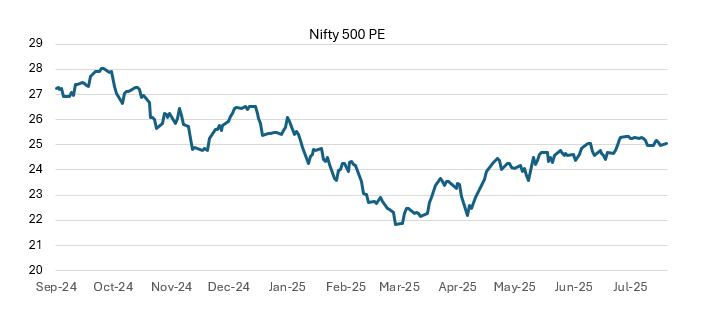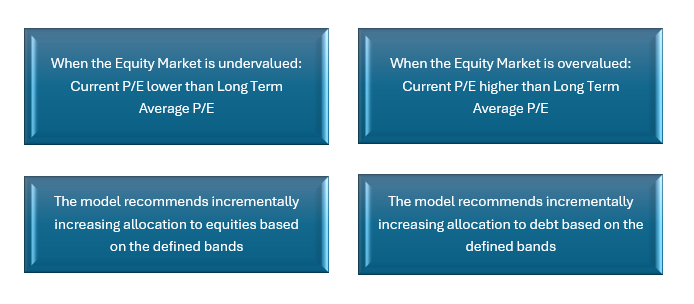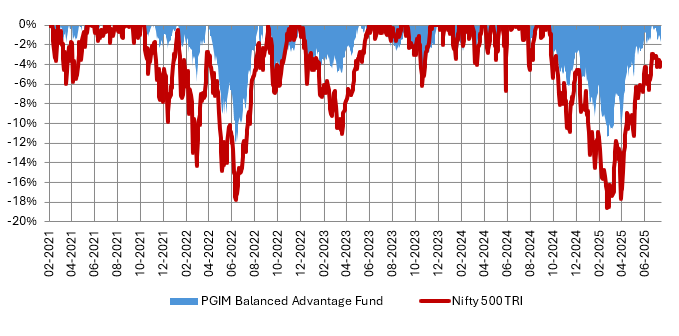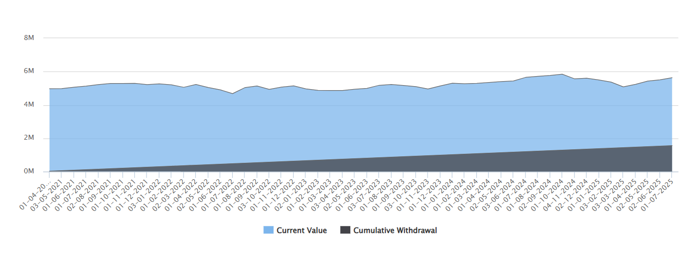PGIM India Balanced Advantage Fund: Good investment option in uncertain market conditions

Current market context
The market has been volatile this year due to rapid geopolitical developments. The market bounced back after cessation of hostilities in the Middle East. However, the market has again turned volatile due to global trade uncertainties, impact of tariffs / counter-tariffs, EU sanctions on Russian oil etc. Current market conditions where interest rates are falling, precious metals are at record highs and there is uncertainty about global macro-economic outlook can leave investors confused. Asset allocation plays an important role in providing stability to your portfolio in volatile markets. In economic and market conditions where the outlook is uncertain, dynamic asset allocation can be effective in balancing risks and generating potential risk adjusted returns over long investment horizons. In this article we will review PGIM India Balanced Advantage Fund.
Current valuations
The chart below shows the PE multiple Nifty 500 from September 2024 till date (as on 21st July 2025). Though valuations are down from peak, multiples have been creeping up after the market bottomed out in March. Q1 earnings season is currently underway. It remains to be seen whether corporate earnings support valuations.

Source: National Stock Exchange. Period: 1st September 2024 to 21st July 2025
How Balanced Advantage Funds work?
In Balanced Advantage funds, the asset allocation between equity and fixed income (debt) is managed dynamically depending on prevailing market conditions. When equity valuations are high, the fund manager shifts the asset allocation from equity to debt and equity valuations are low, asset allocation is shifted from debt to equity. This ensures that in the ensuing correction investors do not see a big fall in the investment value. When stock prices are very low, the fund manager shifts back to equity, so that investors are able to get maximum benefits from the recovery which follows. Balanced Advantage funds typically follow the "Buy low, Sell High" approach.
Dynamic Asset Allocation model of the PGIM India Balanced Advantage Fund
Asset allocation for PGIM India Balanced Advantage Fund is guided by a Dynamic Asset Allocation model. The fund dynamically changes its asset allocation based on the deviation of the current P/E ratio of Nifty 500 from the long term average P/E of the index (as shown in the graphic below). 15 year rolling P/E of Nifty 500 Index is considered for the long-term P/E average, whereas the current PE is the last 20 days moving average.

PGIM India Balanced Advantage Fund’s dynamic asset allocation model is scientific and transparent. Using this model, PGIM India Balanced Advantage Fund follows the "Buy Low, Sell High" mantra, allocates across equity and debt based on the market valuations. The fund maintains minimum 65% exposure to equity and equity related instruments (this ensures equity taxation for the fund), with directional equity exposure of at least 30% at all points of time.
Strong upturn in performance
The fund had experienced a strong upturn in performance in last 12 to 18 months. The fund has been in the top 2 quartiles 4 times in the last 5 quarters. You can see that the fund outperformed the category average across different market conditions.

Source: Advisorkhoj Research, as on 30th June 2025
Outperformed peers in up markets
The chart below shows the 1 month rolling returns (rolled daily) of PGIM India Balanced Advantage Fund versus balanced advantage funds / dynamic asset allocation funds category average since 1st April 2024. You can see that fund consistently outperformed the category average in up markets. Though the fund may have been slightly more volatile relative to category average, the median rolling returns of the fund was higher than category average.

Source: Advisorkhoj Research, Period: 1st April 2024 to 21st July 2025
Limited downside risks for investors
The chart below shows the drawdowns of PGIM India Balanced Advantage Fund versus the broad market index, Nifty 500 TRI since the inception of the fund. You can see that the fund was able to limit downside risks for investors in volatile markets. The fund can be suitable for first time investors who do not have experience of market volatility.

Source: Advisorkhoj Research. Period: 8th February 2021 to 21st July 2025
Suitable for SWP
Balanced advantage funds are suitable for SWP since they are relatively less volatile. In other words, relatively lesser number of units have to redeemed to generate SWP cash-flows in falling markets compared to more volatile funds. The chart below of shows the result of Rs 30,000 monthly SWP from an investment of Rs 50 lakhs in PGIM Balanced Advantage Fund from 1st April 2021. You can see that despite withdrawing Rs 15.6 lakhs (from investment of Rs 50 lakhs), the value of your balance units would have grown to Rs 56 lakhs as on 1st July 2025.

Source: Advisorkhoj Research. Period: 1st April 2021 to 21st July 2025
Asset Allocation
The fund has significantly higher net equity allocations compared to the balanced advantage funds category average. The higher net equity allocation may help the fund outperform peers in market recovery phases.

Source: Advisorkhoj Research, PGIM India MF, as on 30th June 2025
Who should invest in PGIM India Balanced Advantage Fund?
- Investors who want capital appreciation and income over long investment tenures
- Investors who do not want high volatility in their portfolios
- Investors with minimum 3 to 5 years investment horizon
- New investors or investors who do not have experience of volatile markets can invest in this scheme
- You should consult with your financial advisor or mutual fund distributor if PGIM India Balanced Advantage Fund is suitable for your investment needs.
Mutual Fund Investments are subject to market risk, read all scheme related documents carefully.
PGIM is the global investment management business of Prudential Financial, Inc. (PFI) USA, with USD 1.5 trillion1 in assets under management. We offer a broad range of investment capabilities through our multi-manager model along with experienced investment teams that assist you in achieving your financial goals. With a glorious legacy of 145 years, PGIM is built on the strength, stability and deep expertise in managing money. We offer you a long-term perspective, having weathered multiple market cycles, and see opportunity in periods of disruption.
Investor Centre
Follow PGIM India MF
More About PGIM India MF
POST A QUERY











